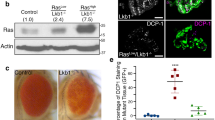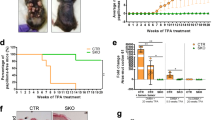Abstract
Effects of nalidixic acid and its derivatives were investigated on mouse cells transformed by methylcholanthrene or an activated c-Ha-ras oncogene. Our findings were as follows. Nalidixic acid preferentially suppressed growth in soft agar of transformed Balb/3T3 mouse cells induced by methylcholanthrene. The suppressive effect of nalidixic acid on growth in soft agar was reversible. Nalidixic acid reversibly reduced saturation density of these transformed cells. Oxolinic acid and pipemidic acid, which are derivatives of nalidixic acid, were less effective than nalidixic acid in suppressing growth in soft agar. Nalidixic acid suppressed growth in soft agar of NIH/3T3 mouse cells transformed by an activated c-Ha-ras, without affecting the amount of ras p21 proteins as detected by an immunoblotting analysis using a monoclonal antibody. These results show that nalidixic acid reversibly suppressed the expression of transformed phenotypes that were already being expressed.
This is a preview of subscription content, access via your institution
Access options
Subscribe to this journal
Receive 24 print issues and online access
$259.00 per year
only $10.79 per issue
Buy this article
- Purchase on Springer Link
- Instant access to full article PDF
Prices may be subject to local taxes which are calculated during checkout
Similar content being viewed by others
Author information
Authors and Affiliations
Rights and permissions
About this article
Cite this article
Kaneko, M., Horikoshi, J. Reversible suppression by nalidixic acid of anchorage-independent growth of mouse cells transformed by 3-methylcholanthrene or an activated c-Ha-ras gene. Br J Cancer 60, 880–886 (1989). https://doi.org/10.1038/bjc.1989.384
Issue Date:
DOI: https://doi.org/10.1038/bjc.1989.384



